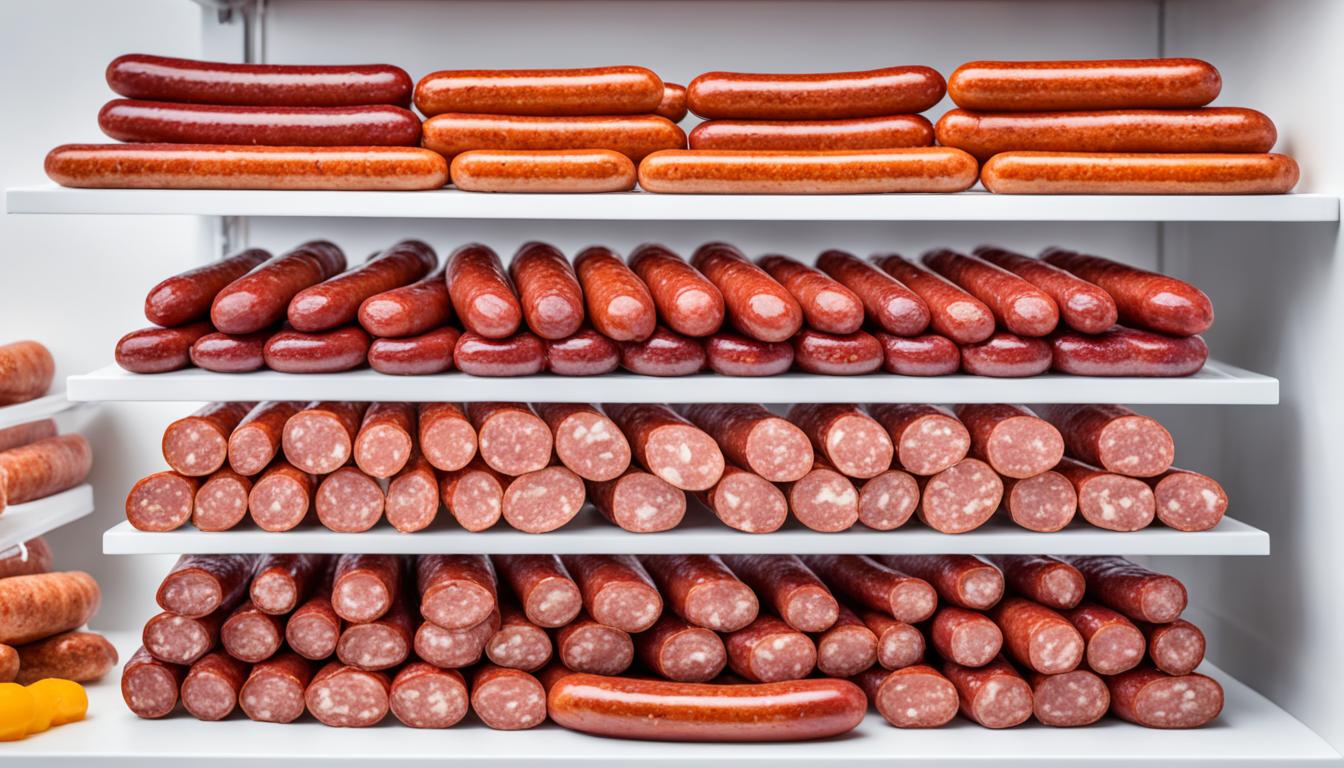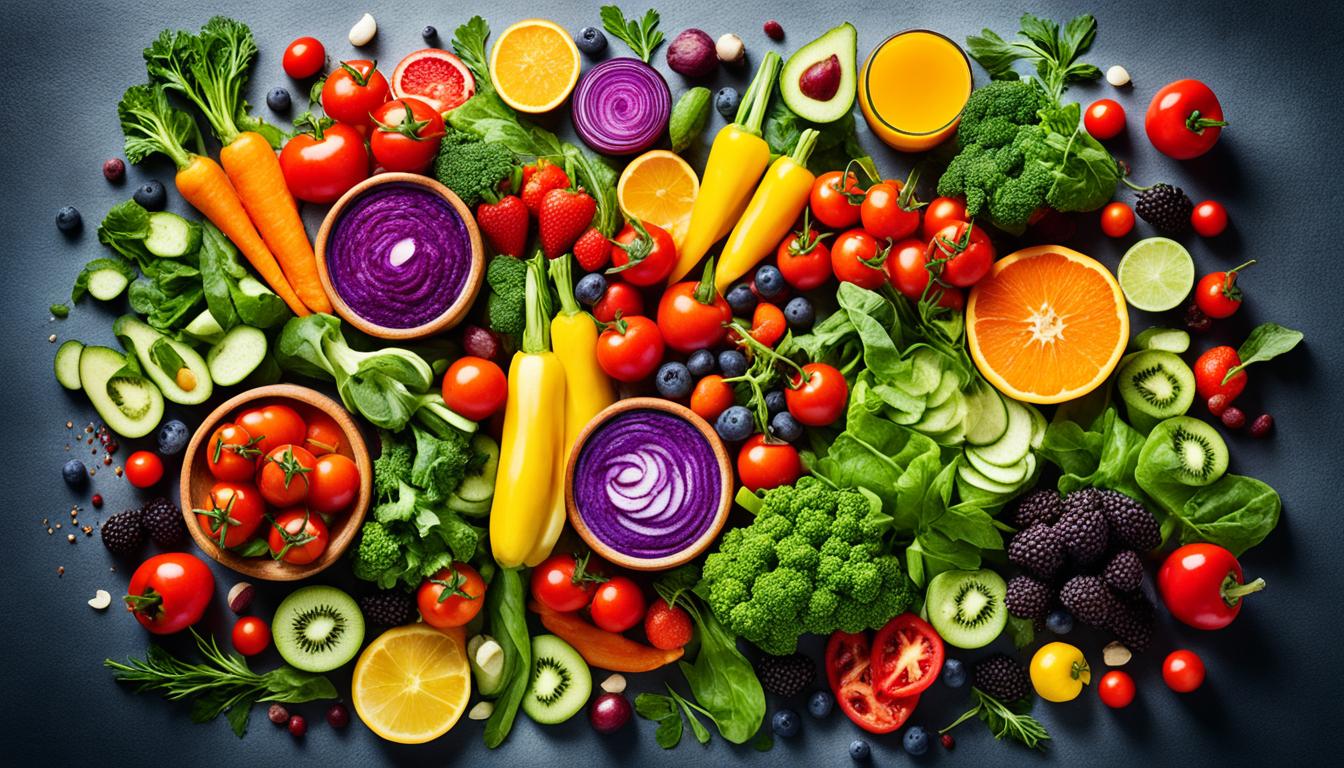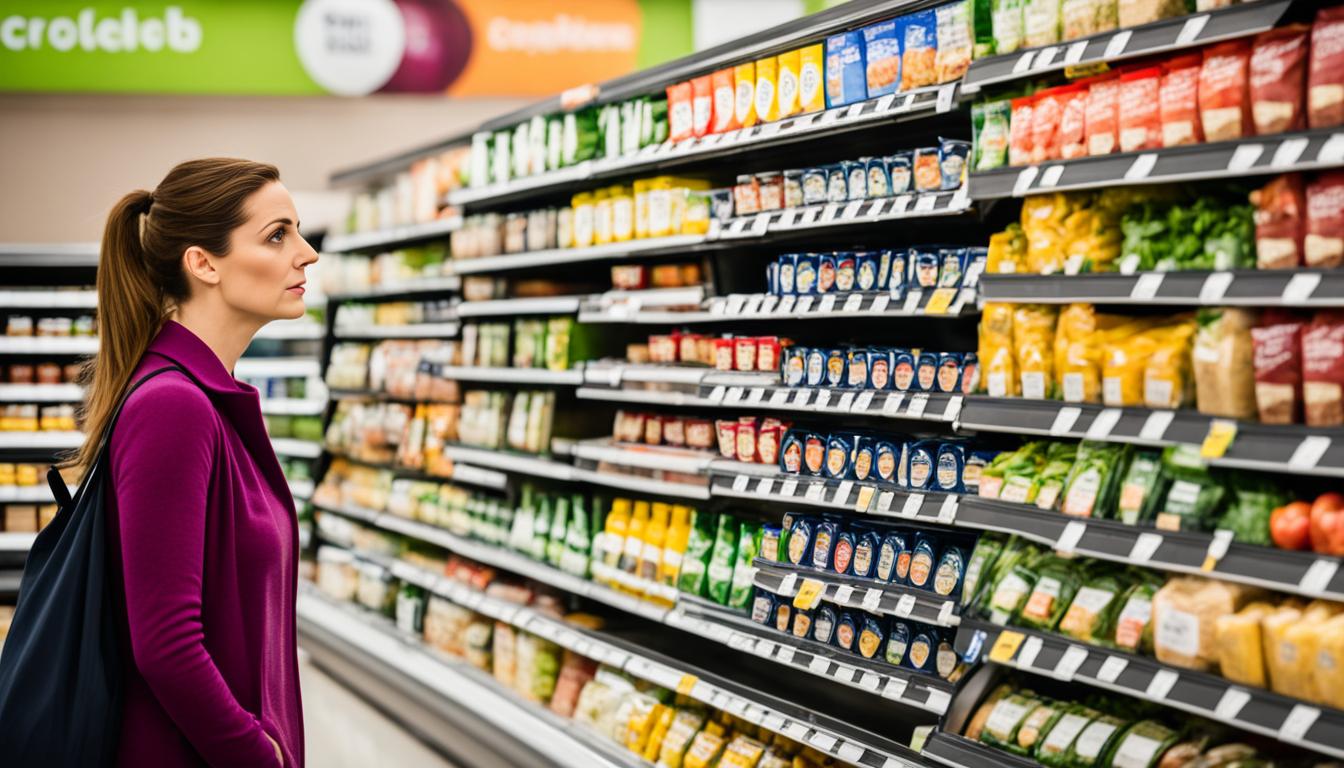
The Art of Juicy and Flavorful Sausages: The Secret Role of Natural Gelling Agents
SUBSCRIBE TO OUR BLOG
Promotions, new products, and recipes.
Discover the ancient secret that transforms ordinary meat into succulent, mouth-watering sausages. The culinary magic lies in the power of natural gelling agents, known as hydrocolloids. These remarkable ingredients, including carrageenan, alginate, xanthan gum, and cellulose derivatives, have been used for centuries in the art of sausage making. They play a crucial role in enhancing the texture, moisture retention, and binding properties of sausages, resulting in a truly enjoyable eating experience.
Key Takeaways:
- Hydrocolloids such as carrageenan, alginate, xanthan gum, and cellulose derivatives are natural gelling agents used in sausage making.
- These gelling agents improve the texture, moisture retention, and binding properties of sausages.
- By incorporating hydrocolloids into sausage recipes, you can elevate the flavor and succulence of your homemade sausages.
- Hydrocolloids act as binders, emulsifiers, and stabilizers, enhancing water and fat retention, flavor, and shelf life of sausages.
- Understanding the science behind hydrocolloids allows you to create sausages that reach a whole new level of deliciousness.
The Importance of Fat in Sausage Making
Fat is an essential element in the art of sausage making. It not only adds richness and flavor but also plays a crucial role in determining the texture and mouthfeel of sausages. Different types of fats can be used in sausage production, such as saturated fats from animal products and monounsaturated and polyunsaturated fats from plants. Each type of fat influences the overall quality of sausages in its own unique way.
Transform your cooking with the latest in culinary innovations and ingredients. Don’t miss out – shop now.
Managing the fat content is vital for achieving the desired juiciness and moisture retention in sausages. The fat content affects the water content in sausages, and the balance between fat and water is crucial to the final product's succulence. Achieving the ideal fat content ensures that each bite of the sausage is moist, flavorful, and satisfying.
Hydrocolloids, such as carrageenan and alginate, can further enhance the moisture retention properties of sausages. These natural gelling agents help the sausages retain moisture during the cooking process, resulting in a juicy and delectable eating experience. By incorporating hydrocolloids into sausage recipes, you can ensure that the final product remains succulent and flavorful.
The Role of Fat in Meat Processing
Fat plays multiple roles in the meat processing industry, especially in sausage making. It adds flavor, contributes to the mouthfeel, and enhances the texture of sausages. Fat also acts as a binder, holding the ingredients together and providing a cohesive structure.
During the sausage-making process, fat is distributed evenly throughout the meat mixture, improving the overall texture of the sausages. It creates pockets of juiciness that burst with flavor when cooked.
Managing Fat Content for Optimal Sausage Quality
Controlling the fat content is a critical aspect of sausage making. It requires careful consideration to ensure the sausages have the perfect balance of fat and lean meat. The fat content can vary depending on the type of sausages being made, such as lean sausages or those with a higher fat content for added richness.
When selecting fats for sausage making, it's essential to consider factors like flavor, melting point, and stability. Animal fats, such as pork fatback or beef suet, are commonly used for their rich flavor profile. Plant-based fats, like olive oil or coconut oil, can be used as alternatives for those seeking vegetarian or vegan options.
The Importance of Sausage Moisture Retention
Moisture retention is crucial in sausage making to ensure that the final product is juicy and succulent. Proper moisture retention prevents the sausages from drying out during cooking and maintains their tender texture.
Water content in sausages plays a significant role in moisture retention. The balance between fat and water is a delicate one, as too much or too little water can affect the overall quality of the sausages. Hydrocolloids, like carrageenan and alginate, aid in moisture retention by binding water molecules to the meat proteins, resulting in a moist and flavorful sausage.
The table below provides an overview of different types of fat commonly used in sausage making:
| Type of Fat | Source | Characteristics |
|---|---|---|
| Saturated Fat | Animal Products (e.g., pork fatback, beef suet) | Provides richness and flavor. Solid at room temperature. |
| Monounsaturated Fat | Plant-Based (e.g., olive oil, avocado oil) | Heart-healthy fat. Liquid at room temperature. |
| Polyunsaturated Fat | Plant-Based (e.g., sunflower oil, safflower oil) | Heart-healthy fat. Liquid at room temperature. |
Proper fat management, along with the incorporation of hydrocolloids, ensures that sausages are not only flavorful but also moist and satisfying to eat.
The Role of Hydrocolloids as Binders and Extenders
Hydrocolloids play a vital role in sausage production as versatile binders and extenders. These natural ingredients, including soy protein isolate, soy protein concentrate, sodium caseinate, and whey protein, improve the texture, binding properties, and cost efficiency of sausages.
When added to sausage recipes, hydrocolloids create protein-water-oil emulsions or act as meat extenders, resulting in sausages with a higher protein content and better binding properties. This enhances the overall quality of the sausages, providing a delightful eating experience for sausage lovers.
Not only are hydrocolloids beneficial for traditional meat-based sausages, but they also offer an excellent option for vegetarian sausages. By incorporating hydrocolloids into plant-based recipes, sausage enthusiasts can enjoy sausages that are flavorful and have improved texture, without the need for animal-based extenders.
Let's take a closer look at the specific benefits of hydrocolloids as binders and extenders:
Improved Texture
Hydrocolloids contribute to the texture of sausages by enhancing their moisture retention and structure. Their ability to bind water and fat molecules results in sausages that are juicier and more succulent. Whether you prefer a firmer or softer texture, hydrocolloids can help achieve the desired consistency.
Enhanced Binding Properties
One of the key challenges in sausage production is ensuring that the ingredients blend together seamlessly. Hydrocolloids act as effective binders, creating a uniform and cohesive sausage mixture. They help prevent fat and water separation, resulting in sausages that hold their shape during cooking and slicing.
Cost Efficiency
Hydrocolloids offer a cost-effective solution for sausage makers. By incorporating these ingredients into sausage recipes, manufacturers can reduce the overall cost of production. Hydrocolloids act as extenders, allowing for the utilization of less-expensive meat cuts while maintaining the desired taste, texture, and appearance of the sausages.
| Type of Hydrocolloid | Main Function | Suitable for |
|---|---|---|
| Soy Protein Isolate | Enhances protein content, improves water retention | Both meat and vegetarian sausages |
| Soy Protein Concentrate | Improves protein content, aids in binding | Both meat and vegetarian sausages |
| Sodium Caseinate | Enhances emulsion stability, provides binding properties | Both meat and vegetarian sausages |
| Whey Protein | Improves texture, adds moisture retention | Both meat and vegetarian sausages |
When exploring sausage recipes or developing your own, consider the specific properties and benefits of each hydrocolloid. This will allow you to select the most suitable option for achieving the desired texture, binding, and cost efficiency in your sausages.
Next, we will dive into the impact of hydrocolloids on flavor and texture, showing you how these natural gelling agents can take your sausage creations to new heights.
Enhancing Flavor and Texture with Hydrocolloids
Hydrocolloids are not only essential for improving the moisture retention and binding properties of sausages, but they also play a significant role in enhancing their flavor and texture. By incorporating hydrocolloids into your sausage recipes, you can create unique flavor profiles that will take your sausages to the next level.
Hydrocolloids, such as carrageenan, alginate, and xanthan gum, have the remarkable ability to interact with water, resulting in improved texture and juiciness. They form a gel-like matrix that holds the moisture within the sausage, preventing it from drying out during cooking. This ensures that every bite is succulent and bursting with flavor.
Furthermore, hydrocolloids contribute to the overall texture of sausages, making them more tender and enjoyable to eat. They help create a smooth and uniform consistency that adds to the sensory experience of each bite.
To further enhance the flavor of your sausages, combining hydrocolloids with natural spices and seasonings is a winning combination. The hydrocolloids act as carriers, helping to evenly distribute the flavors throughout the sausage mixture. This results in flavorful and aromatic sausages that will tantalize your taste buds.
Examples of Hydrocolloids for Flavor Enhancement
| Hydrocolloid | Flavor Enhancement |
|---|---|
| Carrageenan | Provides a creamy and smooth mouthfeel |
| Alginate | Enhances the freshness and brightness of flavors |
| Xanthan Gum | Improves the texture and suspension of ingredients |
When incorporating hydrocolloids into your sausage recipes, consider the specific flavors you wish to emphasize and select the appropriate hydrocolloid accordingly. Experimentation and finding the perfect balance of hydrocolloids and spices will allow you to craft sausages that are bursting with taste.
By leveraging the power of hydrocolloids and combining them with natural spices and seasonings, you can create sausages that are truly exceptional in flavor and texture. Elevate your sausage-making game by exploring the endless possibilities offered by hydrocolloids.
Natural Gelling Agents as Alternatives to Synthetic Fillers
When it comes to sausage production, natural gelling agents offer a healthier and more sustainable alternative to synthetic fillers. Synthetic fillers often contain artificial ingredients and additives that can compromise the quality and taste of sausages. On the other hand, natural gelling agents, such as hydrocolloids derived from plants, provide a cleaner ingredient list and a more natural taste.
By using natural gelling agents as fillers in sausages, you can create homemade sausages that are customized to suit your preferences and dietary needs. These natural alternatives not only ensure a cleaner and more natural taste but also provide a range of options for sausage types.
Here are some reasons why natural gelling agents are a great choice for homemade sausages:
- Healthier Ingredients: Natural gelling agents are derived from plants and have fewer additives compared to synthetic fillers. By using these natural alternatives, you can enjoy sausages with a cleaner ingredient profile.
- Customizable: When making sausages at home, you have full control over the ingredients. By using natural gelling agents, you can customize the flavors, textures, and fillings to suit your preferences and dietary requirements.
- Wide Range of Sausage Fillers: Natural gelling agents provide a versatile range of options for sausage fillers. Whether you prefer meat-based sausages, vegetarian sausages, or sausages with unique flavor combinations, natural gelling agents can accommodate various sausage types.
Table: Comparison of Natural Gelling Agents and Synthetic Fillers in Sausage Production
| Natural Gelling Agents | Synthetic Fillers |
|---|---|
| Derived from plants | Contain artificial ingredients and additives |
| Healthier option with fewer additives | Potential health concerns due to artificial additives |
| Customizable for different dietary needs | Limited options for customization |
By opting for natural gelling agents in sausage making, you can ensure a healthier, more flavorful, and customizable experience. With a wide range of natural options available, you can explore different recipes and create sausages that are tailored to your taste.
Maintaining Moisture in Homemade Sausages
Moisture retention is a crucial factor in the quality of sausages, especially when making homemade sausages. To ensure your sausages remain juicy and flavorful, it is important to utilize proper cooking techniques and incorporate hydrocolloids into your recipe.
Hydrocolloids, such as carrageenan and alginate, play a key role in maintaining moisture during cooking. These natural gelling agents help create a stable meat emulsion in sausages, preventing the loss of moisture. By binding water and fat together, hydrocolloids contribute to a succulent and moist texture, resulting in a delightful eating experience.
In addition to using hydrocolloids, employing the right cooking techniques is essential. Slow and gentle heating methods, such as poaching or steaming, can help retain the moisture in sausages. This ensures that your homemade sausages stay juicy and tender, bursting with flavor.
To summarize, when making homemade sausages, it is crucial to focus on maintaining moisture. By incorporating hydrocolloids and employing the appropriate cooking techniques, you can create sausages that are moist, succulent, and packed with flavor.
Tips for Maintaining Moisture in Homemade Sausages:
- Use hydrocolloids like carrageenan and alginate to create a stable meat emulsion and prevent moisture loss.
- Choose cooking techniques like poaching or steaming that preserve moisture in the sausages.
- Avoid using high heat or overcooking the sausages, as it can cause the loss of moisture.
- Consider adding additional ingredients like herbs, spices, or vegetables to enhance the moisture retention and flavor.
- Properly handle and store the sausages to prevent moisture loss during storage.
The Impact of Hydrocolloids on Sausage Shelf Life
Hydrocolloids, such as carrageenan, alginate, and xanthan gum, play a crucial role in extending the shelf life of sausages. These natural gelling agents have water-absorbing and stabilizing properties that help prevent syneresis, which is the separation of water from the sausage matrix.
Syneresis can negatively affect the texture, appearance, and overall quality of sausages, leading to a shorter shelf life. By incorporating hydrocolloids into sausage production, you can prevent this occurrence and ensure that your sausages maintain their freshness and flavor for a longer period.
Different types of sausages, including dry-cured and cooked sausages, can benefit from the use of hydrocolloids for shelf life extension. Hydrocolloids not only improve the texture and stability of sausages but also contribute to their overall quality, making them a crucial ingredient in sausage preservation.
By utilizing hydrocolloids effectively, you can confidently offer sausages with an extended shelf life, providing your customers with sausages that stay fresh and delicious for longer.
Now, let's explore some concrete examples to understand the impact of hydrocolloids on sausage shelf life.
Comparison of Shelf Life Extension with Hydrocolloids
| Sausage Type | Shelf Life without Hydrocolloids | Shelf Life with Hydrocolloids |
|---|---|---|
| Dry-Cured Sausages | 1-2 months | 3-6 months |
| Cooked Sausages | 2-3 days | 5-7 days |
| Smoked Sausages | 1 week | 2-3 weeks |
As shown in the table, the addition of hydrocolloids can significantly extend the shelf life of sausages across various types. It's important to note that the specific shelf life extension may vary depending on factors such as formulation, storage conditions, and production practices. Nevertheless, integrating hydrocolloids into your sausage production process can undoubtedly enhance the shelf life of your sausages, providing both convenience and quality to your customers.
Choosing the Right Hydrocolloid for Your Sausage
When it comes to creating the perfect sausage, selecting the right hydrocolloid is crucial. Each hydrocolloid brings unique properties and functionalities that can profoundly impact the texture, binding, and moisture retention of your sausages.
Consider the following factors when choosing the ideal hydrocolloid for your sausage recipe:
Texture:
Do you desire a soft and tender sausage or a firmer, more chewy texture? Different hydrocolloids can contribute to varying textures, so it's essential to understand the characteristics of each hydrocolloid and its impact on the final product.
Flavor Profile:
Hydrocolloids can subtly influence the flavor of your sausages. Some hydrocolloids may impart a slight taste or enhance the existing flavors, while others are virtually tasteless. Consider how different hydrocolloids may complement or alter the flavor profile of your sausages.
Cooking Method:
Consider the cooking method you will use for your sausages. Some hydrocolloids may be more suited to certain cooking techniques, such as grilling, baking, or poaching. Understanding how hydrocolloids react to different cooking methods can help you achieve optimal results.
Experimentation is key in finding the perfect hydrocolloid for your sausage recipe. Start by trying small batches with different hydrocolloids to observe how they affect texture, flavor, and cooking results. Through this process, you will gain a deeper understanding of the functionalities of each hydrocolloid and be able to select the most suitable option for your specific sausage recipe.
The image above visually represents the process of selecting hydrocolloids for sausage making, highlighting the importance of considering various factors in order to achieve the desired results.
Enhancing the Nutritional Value of Sausages with Hydrocolloids
Hydrocolloids play a significant role in not just improving the texture, moisture retention, and binding properties of sausages, but also in enhancing their nutritional value. By incorporating hydrocolloids into sausages, you can create products that are not only flavorful but also packed with essential nutrients.
One of the key ways hydrocolloids enhance the nutritional value of sausages is by increasing their protein content. Hydrocolloids, such as soy protein isolate and whey protein, act as binders and extenders, allowing you to add more protein to your sausages. This is especially beneficial for individuals looking to increase their protein intake or following a high-protein diet.
Furthermore, hydrocolloids help improve the water and fat retention properties of sausages. This means that even after cooking, the sausages remain moist and juicy, ensuring a satisfying eating experience. By retaining more water and fat, hydrocolloids can enhance the satiety and flavor of sausages while also providing a source of essential nutrients.
In addition to their role in texture and moisture retention, hydrocolloids offer a natural and plant-based alternative to synthetic additives commonly used in sausage production. This makes them an excellent choice for individuals looking for cleaner and healthier food options. By incorporating hydrocolloids into your sausage recipes, you can enhance their nutritional profile while avoiding artificial ingredients and additives.
Here is a table highlighting the nutritional benefits of incorporating hydrocolloids into sausages:
| Nutrient | Benefits |
|---|---|
| Protein | Increased protein content in sausages, supporting muscle growth and repair. |
| Water Retention | Improved moisture retention, ensuring sausages remain juicy and flavorful. |
| Fat Retention | Better retention of healthy fats, providing a source of essential fatty acids. |
| Plant-Based Alternative | Natural and plant-based alternative to synthetic additives, offering a cleaner ingredient list. |
By utilizing hydrocolloids in meat processing and sausage making, you can create sausages that not only taste great but also contribute to a balanced and nutritious diet. So, why settle for ordinary sausages when you can enhance their nutritional value with the power of hydrocolloids?
Conclusion
Hydrocolloids are an essential ingredient in the art of creating juicy and flavorful sausages. These natural gelling agents play a versatile role in enhancing the texture, moisture retention, and binding properties of sausages, resulting in an exceptional eating experience. By understanding the significance of hydrocolloids and incorporating them into your sausage recipes, you can elevate your homemade sausages to a whole new level of deliciousness.
Experimentation is key in harnessing the full potential of hydrocolloids. By combining them with the right cooking techniques and carefully selected ingredients, you can create sausages that are bursting with juiciness and rich flavor. Whether you're a novice sausage maker or a seasoned chef, mastering the use of natural gelling agents in sausage making is the secret to creating sausages that are truly a work of art.
As you embark on your sausage making journey, keep these tips in mind. Explore the different types of hydrocolloids, such as carrageenan, alginate, xanthan gum, and cellulose derivatives, to discover the unique properties they bring to your sausages. Fine-tune your cooking techniques to ensure optimum moisture retention and succulence. And never be afraid to experiment with flavors and ingredients to create sausages that suit your personal taste preferences and dietary needs.
In conclusion, hydrocolloids are a game-changer in the world of sausage making. By harnessing their power, you can delight your taste buds with homemade sausages that are moist, flavorful, and truly unforgettable.
FAQ
What is the role of natural gelling agents in sausage making?
A: Natural gelling agents, also known as hydrocolloids, play a crucial role in sausage making by improving texture, moisture retention, and binding properties.
How does fat affect the quality of sausages?
A: Fat contributes to the flavor, texture, and mouthfeel of sausages. Managing the fat content and water content is crucial for achieving desired juiciness and moisture retention.
What are the benefits of using hydrocolloids as binders and extenders?
A: Hydrocolloids, such as soy protein isolate, soy protein concentrate, sodium caseinate, and whey protein, improve texture, binding properties, and cost efficiency in sausage production.
How can hydrocolloids enhance the flavor and texture of sausages?
A: Hydrocolloids contribute to the tenderness, juiciness, and overall flavor of sausages. When combined with natural spices and seasonings, they create flavorful and aromatic sausages.
Why are natural gelling agents preferred over synthetic fillers?
A: Natural gelling agents provide a healthier and more natural alternative to synthetic fillers, offering sausages with cleaner ingredients and a more natural taste.
How can I maintain moisture in homemade sausages?
A: Hydrocolloids help create a stable meat emulsion, preventing the loss of moisture during cooking. Utilizing proper cooking techniques, such as slow and gentle heating, can also help maintain moisture.
How do hydrocolloids impact the shelf life of sausages?
A: Hydrocolloids, with their water-absorbing and stabilizing properties, help extend the shelf life of sausages by preventing syneresis or water separation.
How do I choose the right hydrocolloid for my sausage recipe?
A: Consider factors such as desired texture, flavor profile, and cooking method when selecting hydrocolloids for your sausage recipe.
How can hydrocolloids enhance the nutritional value of sausages?
A: By improving texture, moisture retention, and binding properties, hydrocolloids contribute to higher protein content and overall quality in sausages, offering enhanced nutritional value.
How can I elevate my homemade sausages using hydrocolloids?
A: Understanding the science behind hydrocolloids and experimenting with different recipes and techniques will help you create sausages that are truly a work of art.
Source Links
- https://www.meatsandsausages.com/sausage-types/vegetarian/ingredients
- https://link.springer.com/content/pdf/10.1007/978-1-4615-2486-1.pdf
- https://modernistcuisine.com/author/caren/page/5/
Well That's the Story. I hope it was helpful. Let's Hear Your Thoughts!
We've shared our insights, and now it's your turn! Have an opinion, a question, or a story to share about this article? Dive into the comments below and join the conversation. Your voice is a crucial part of this community, and we're eager to hear what you have to say.
Thought that was fascinating? Here’s another story you might like:
See: The Hydrocolloid Glossary
For further reading:
How Nature's Tiny Architects Transform Your Health and Food
Every dish deserves the perfect texture to complement its flavors. Why settle for anything less than perfection? With Cape Crystal Brands Food Texture products, you don't have to. Whether you're crafting velvety sauces, glistening gels, or fluffy mousses, our range ensures you get the consistency you desire every single time.
Don't just cook—create masterpieces. Dive into the world of culinary textures and elevate every meal. Shop now and experience the magic of Cape Crystal!
🛍️ Click Here to Explore Cape Crystal Brands Food Texture Products!

Chef Edmund
Edmund McCormick is the founder of Cape Crystal Brands and EnvironMolds LLC. He is the author of several non-fiction “How-to” books, past publisher of the ArtMolds Journal Magazine, editor of Beginner's Guide to Hydrocolloids, and author of six eBook recipe books available for download on this site. He resides in Far Hill, NJ and lives and breathes his food blogs as both writer and editor. You can follow him on Twitter and Linkedin.
- Choosing a selection results in a full page refresh.





